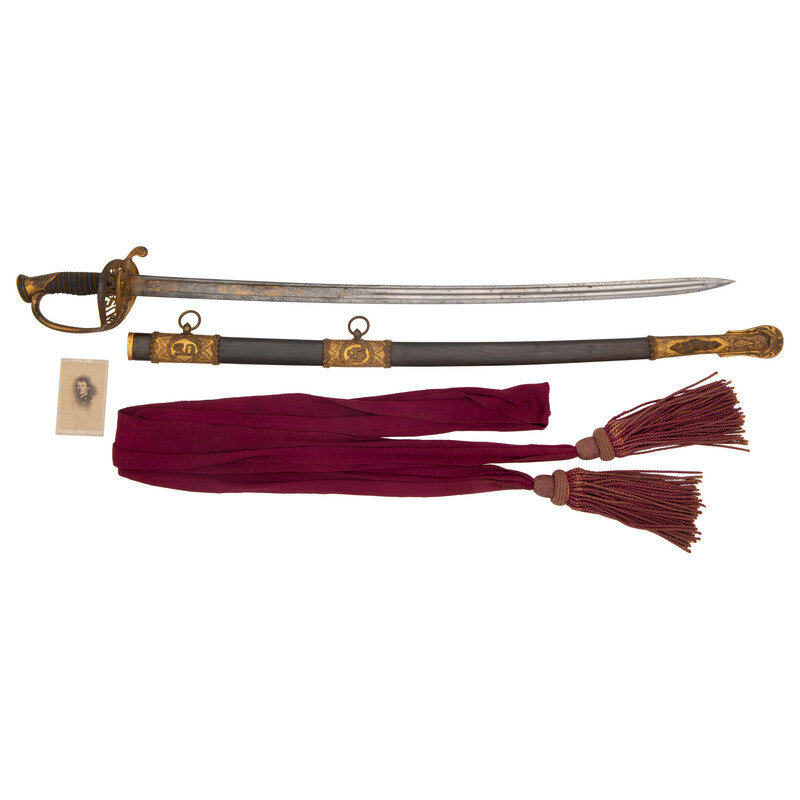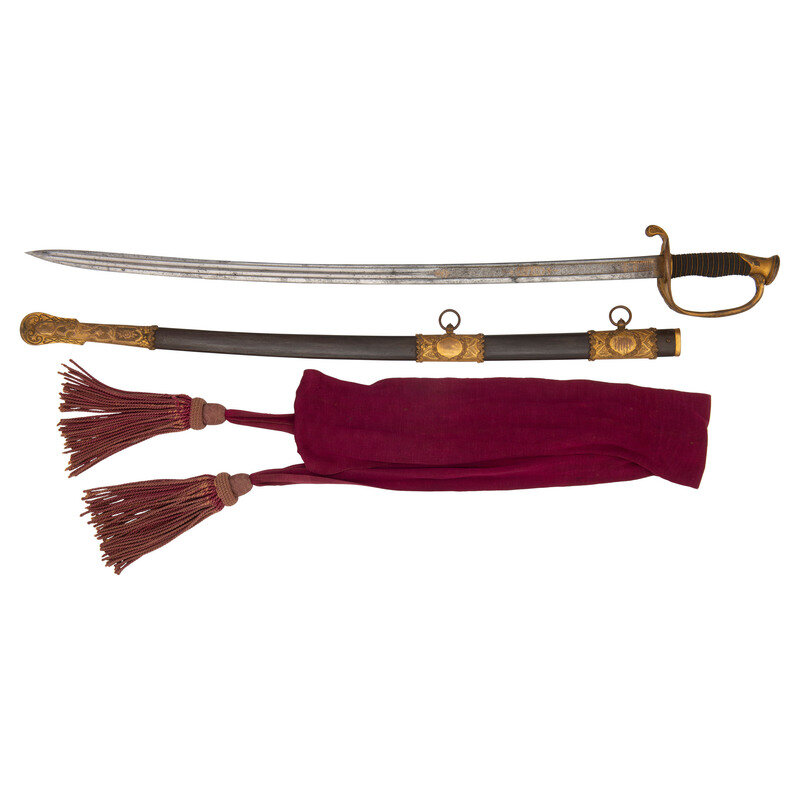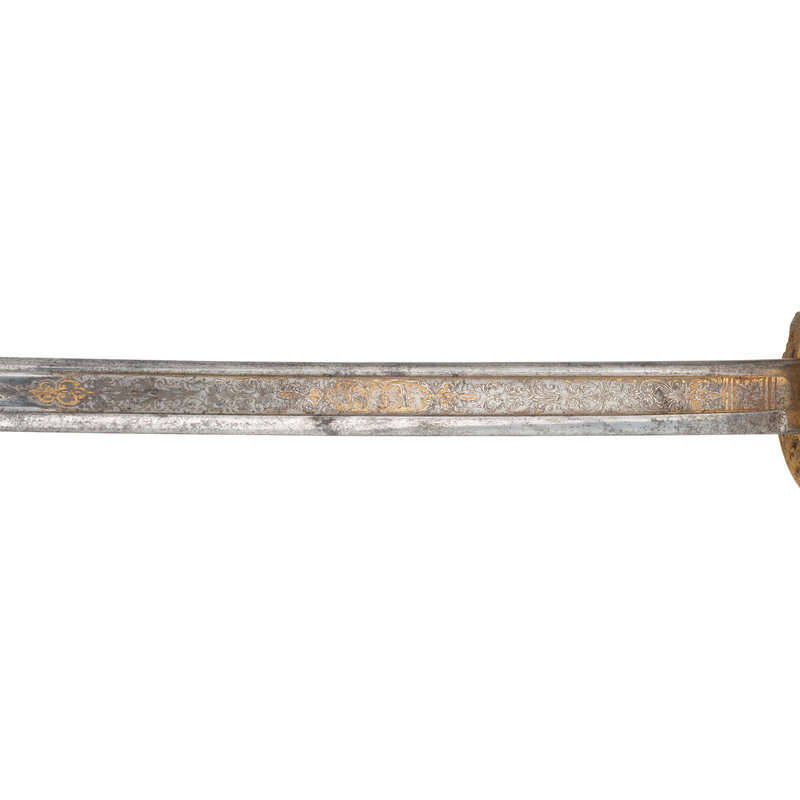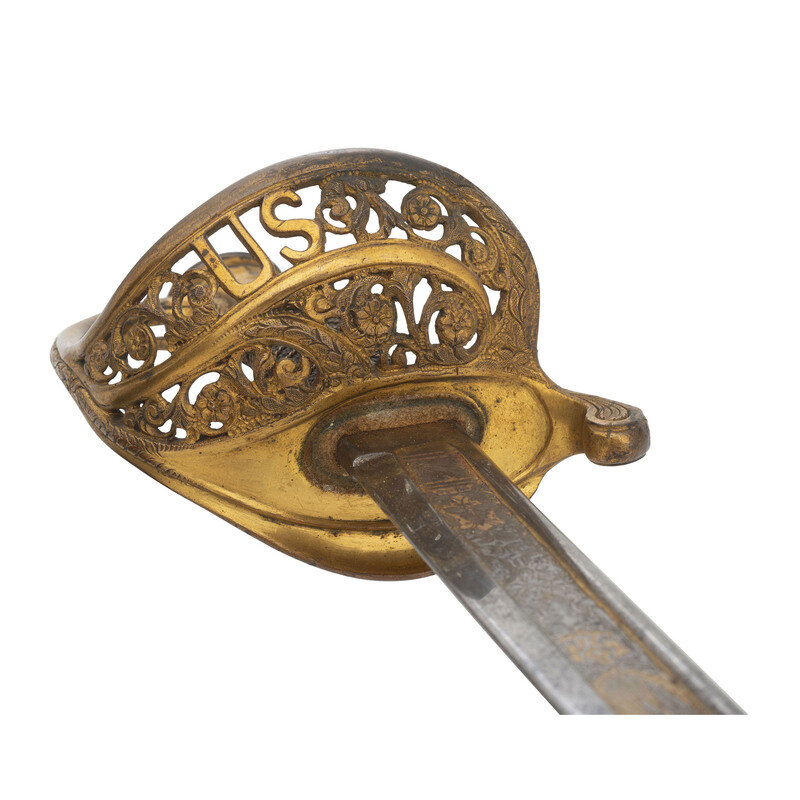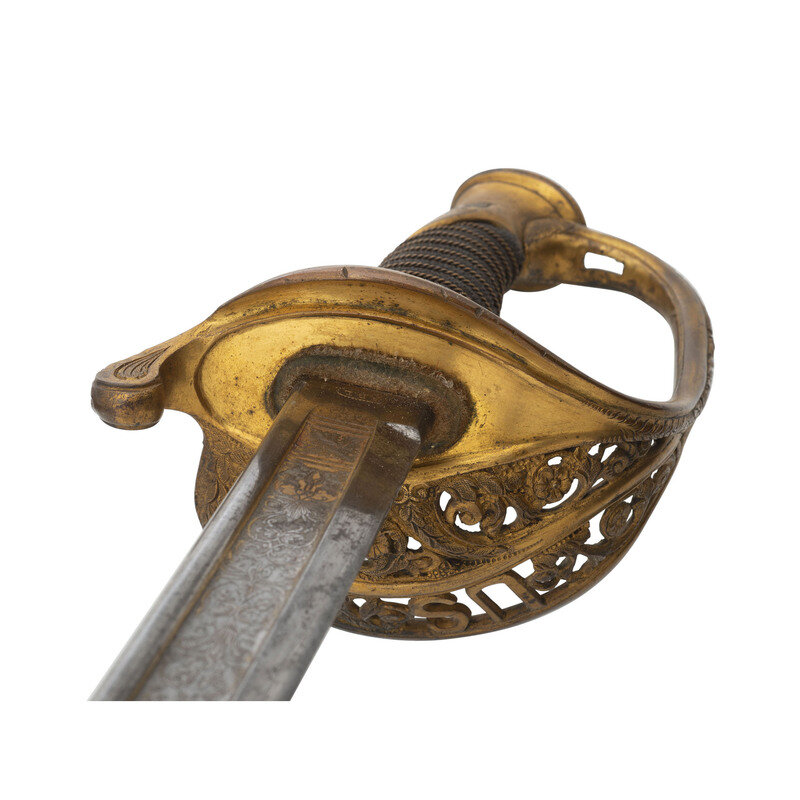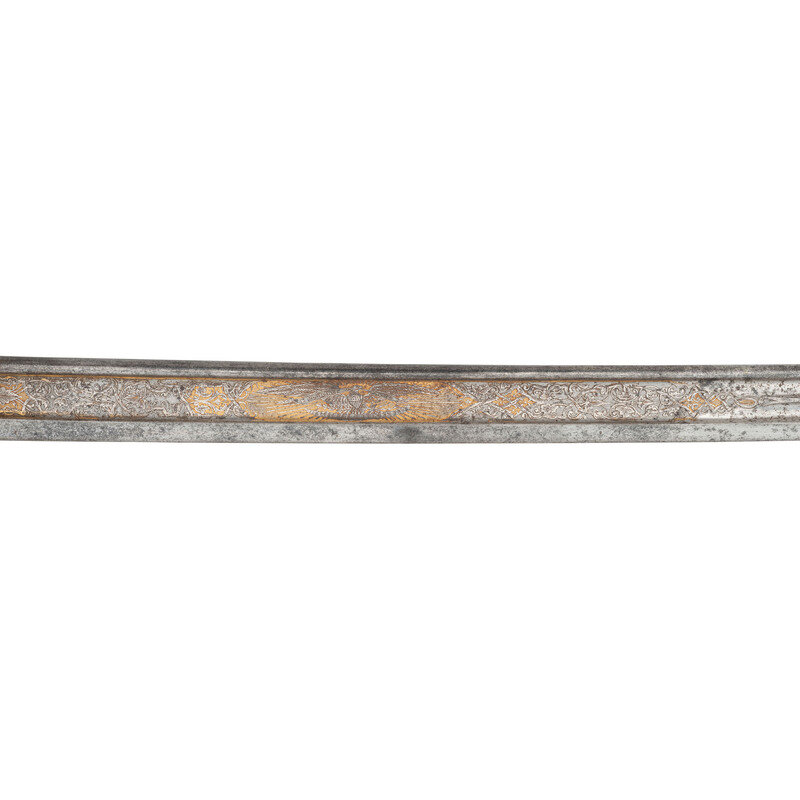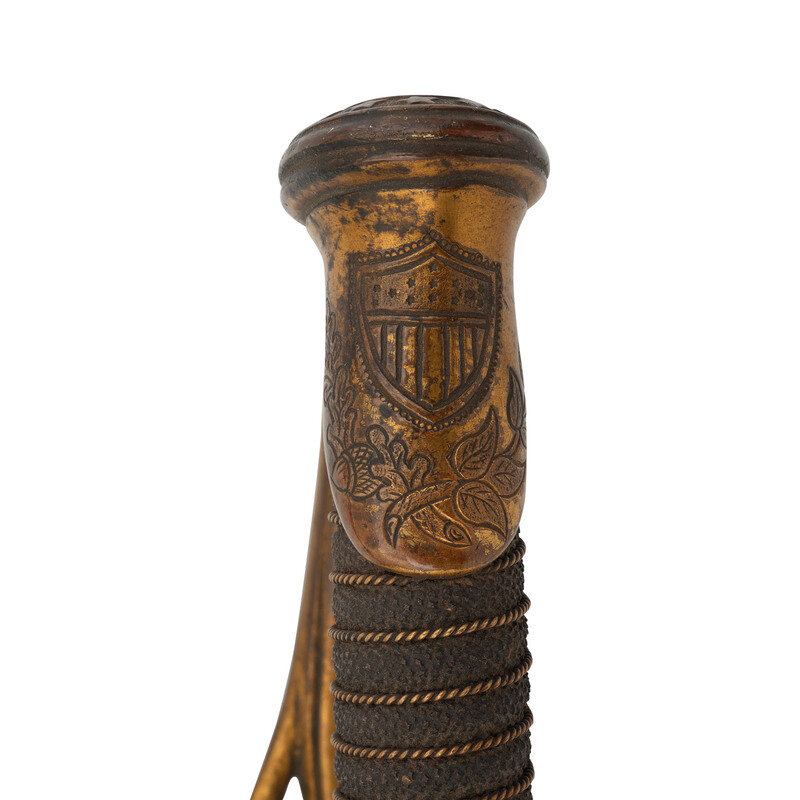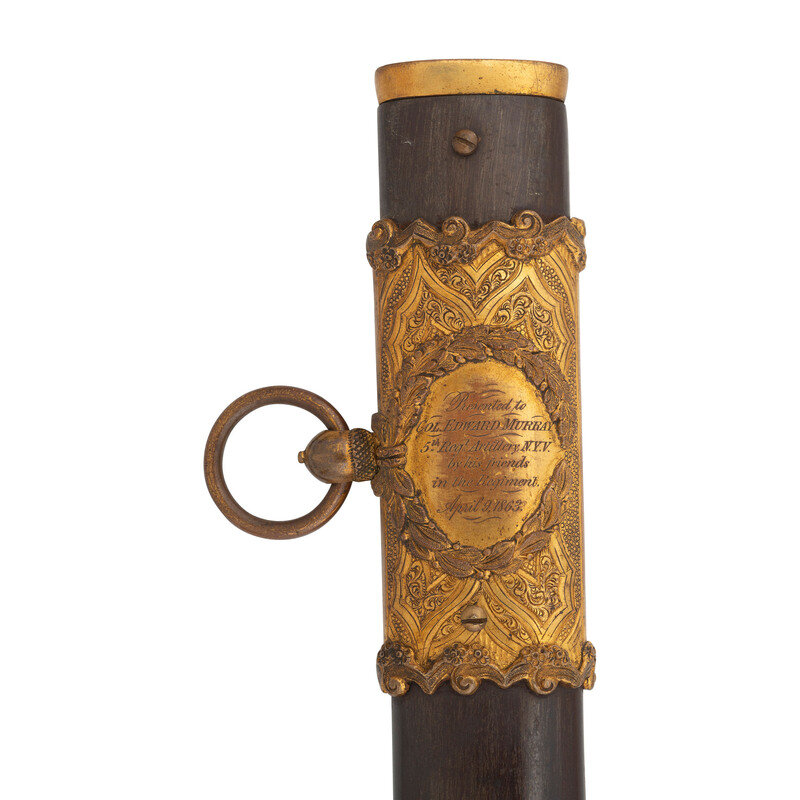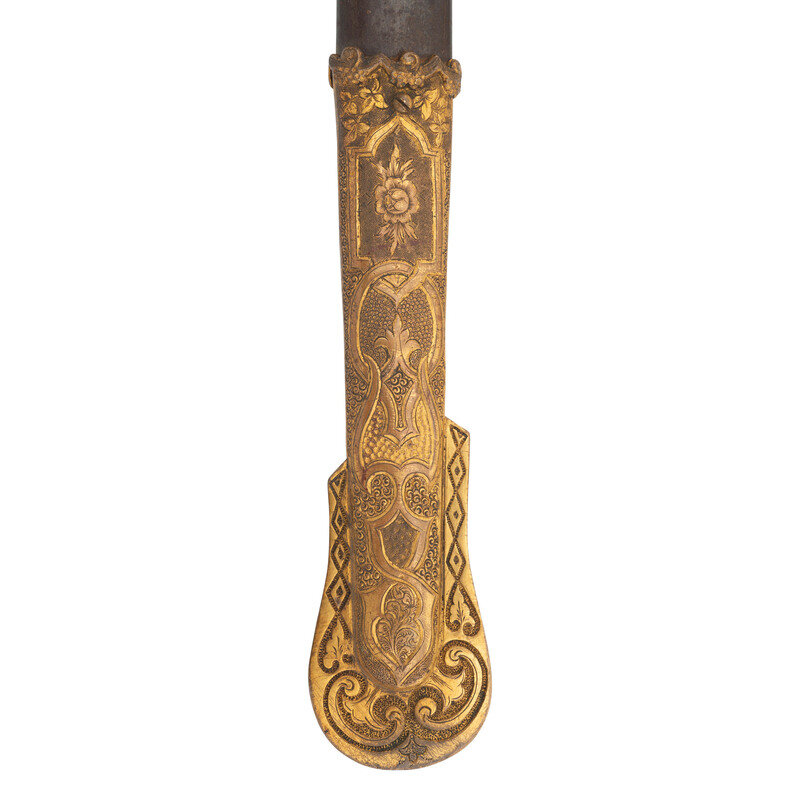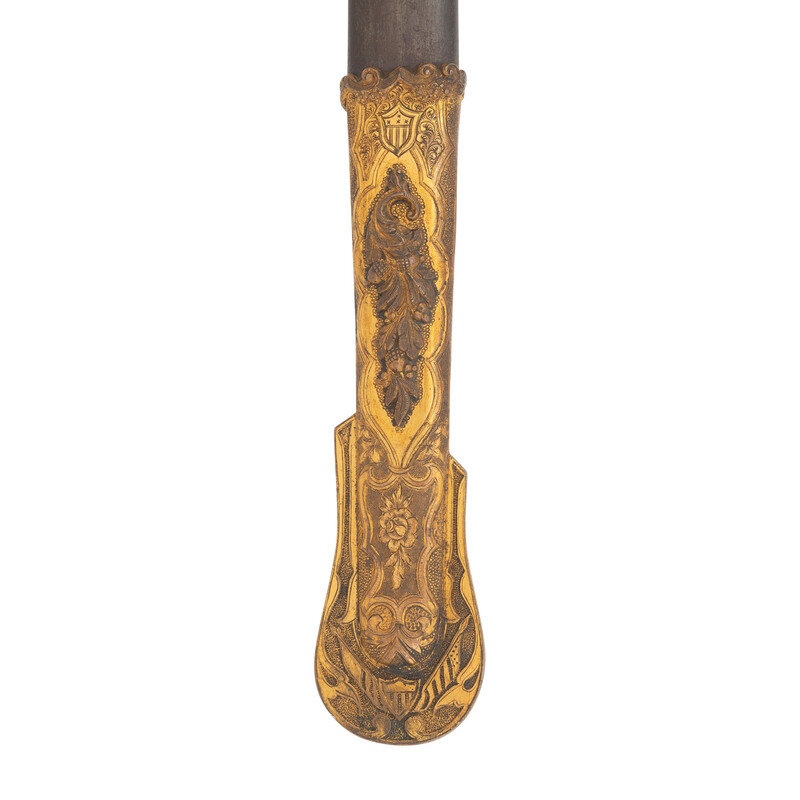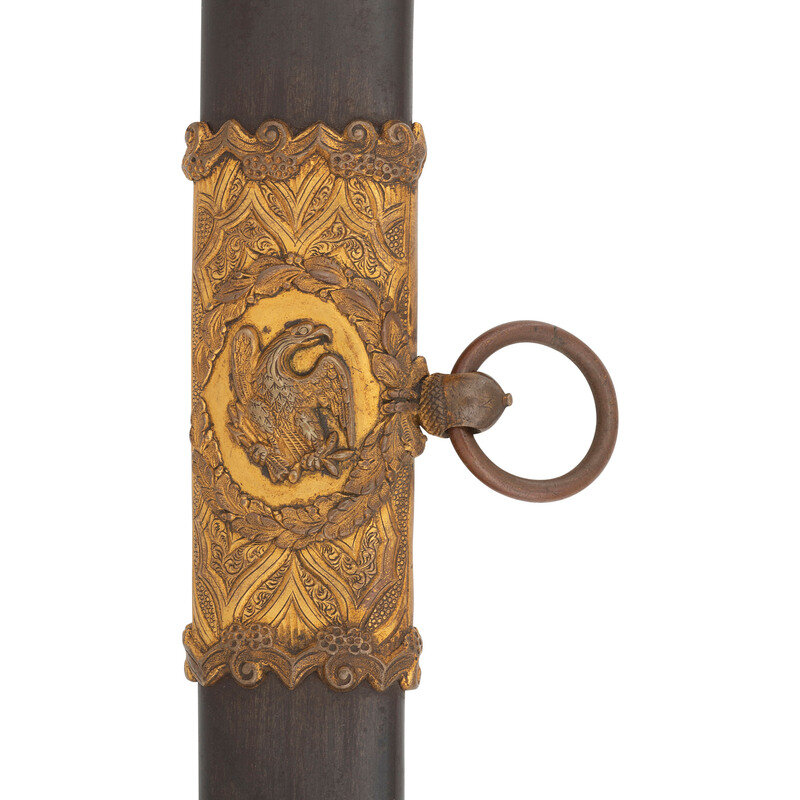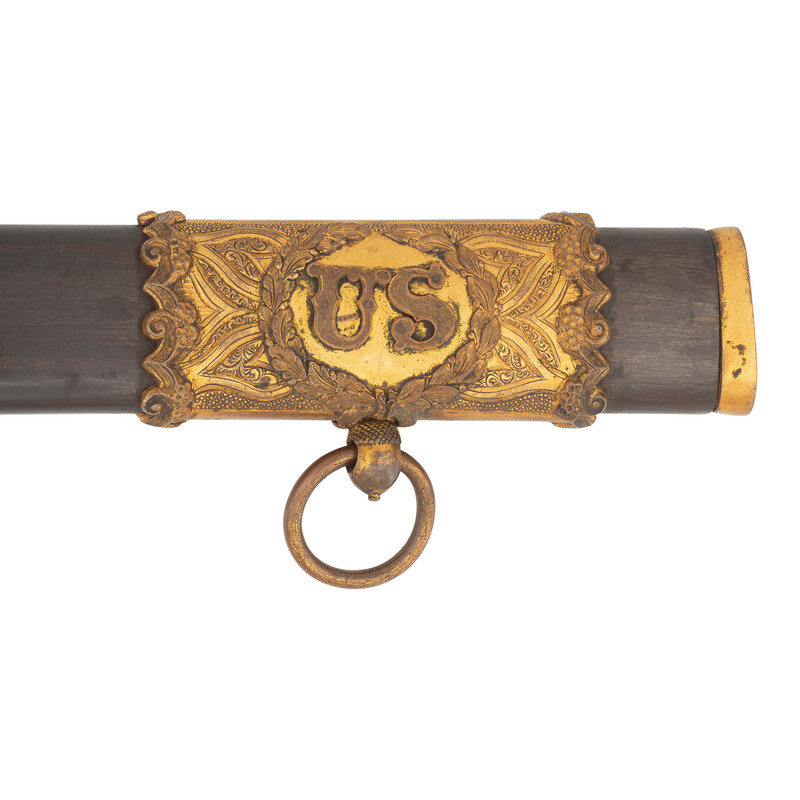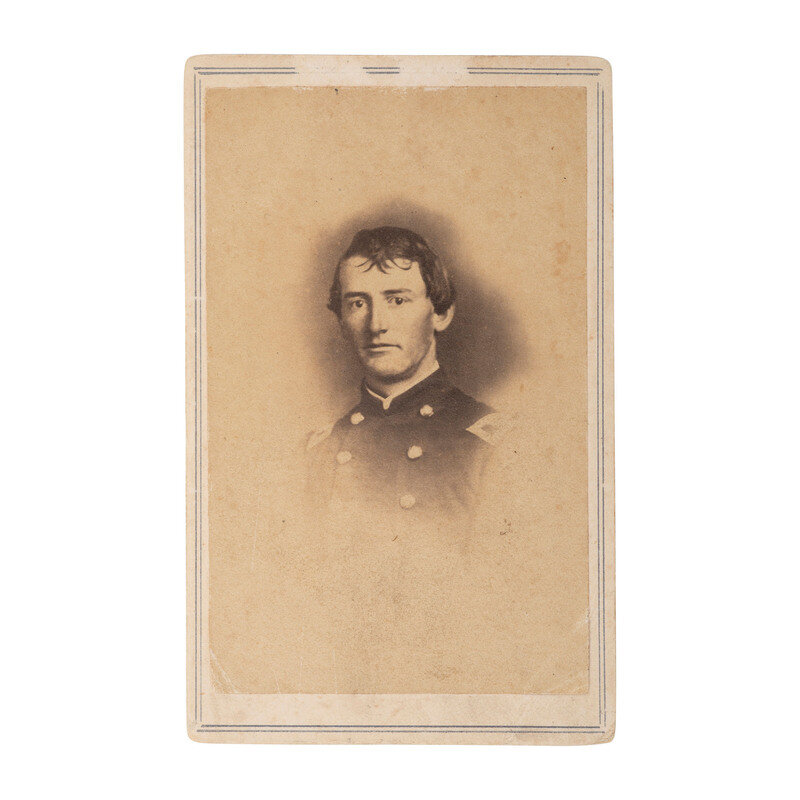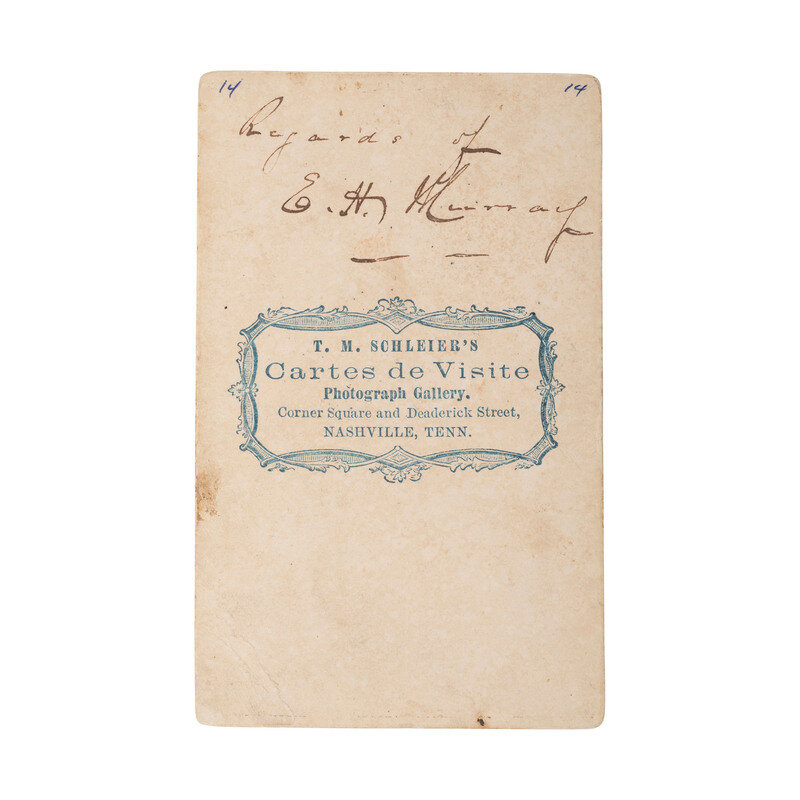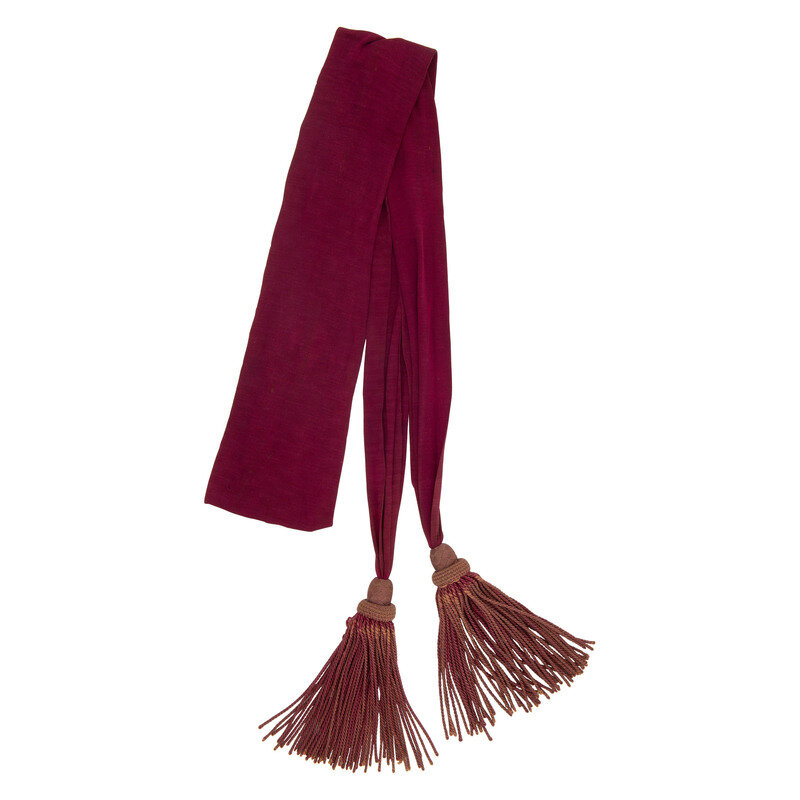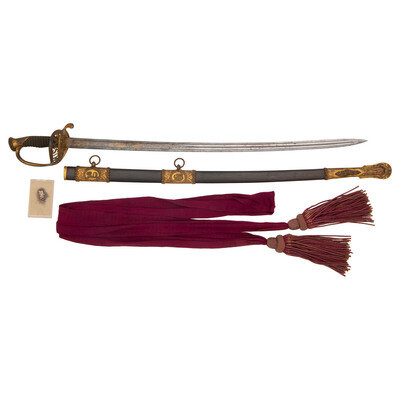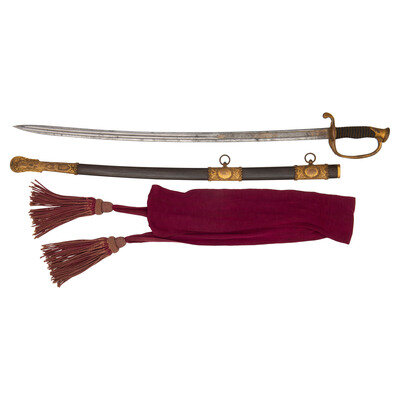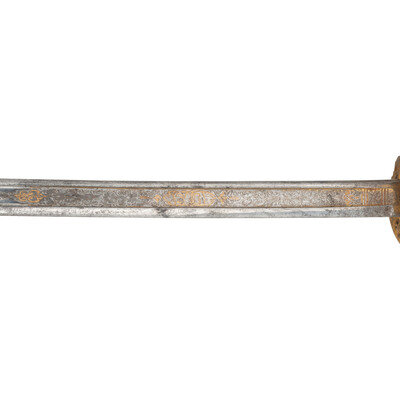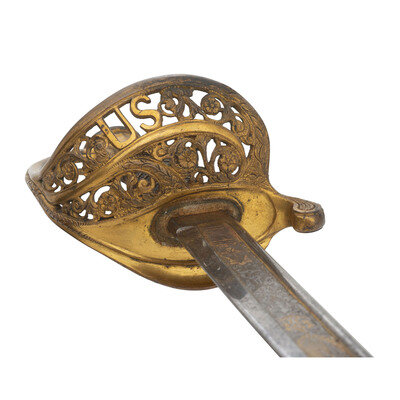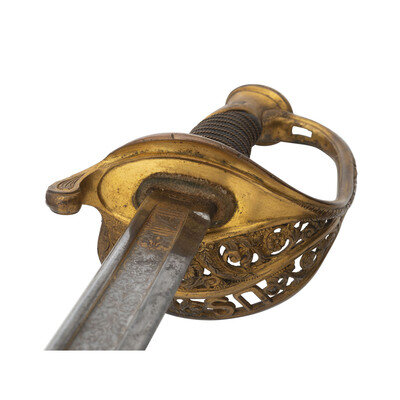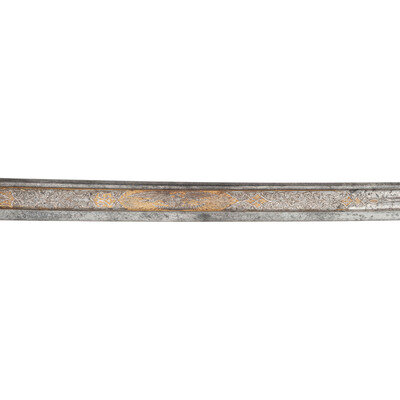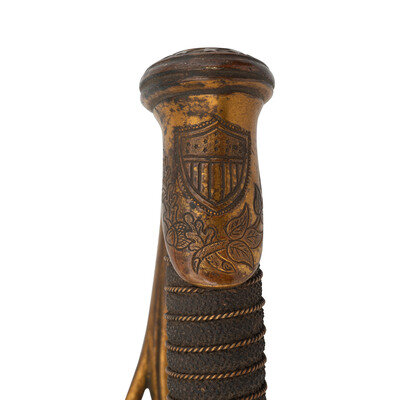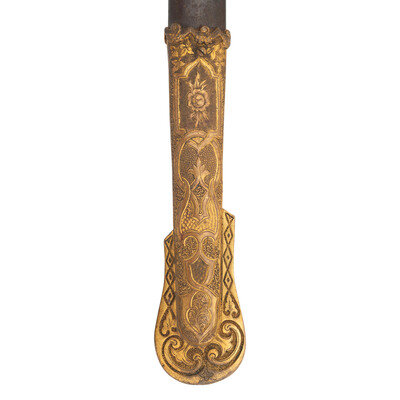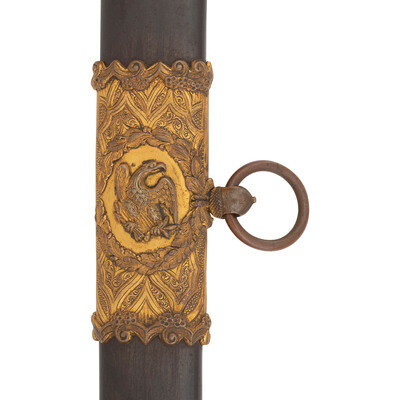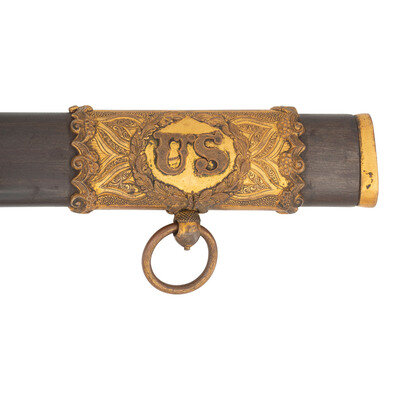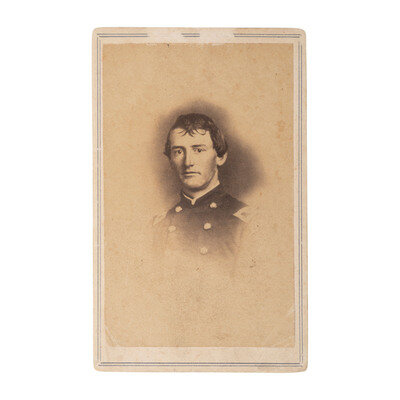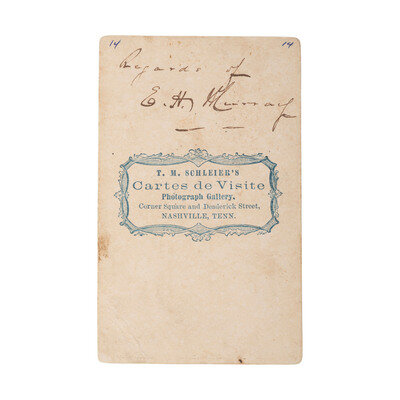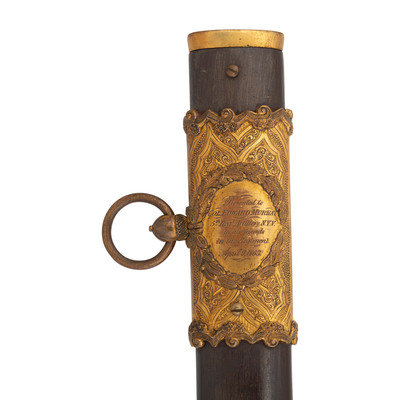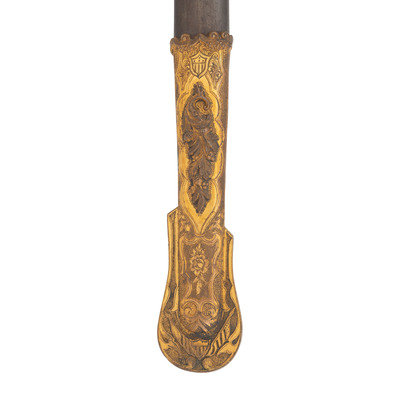Lot 83
31.25" slight curved spear point quill-back blade with a wide, nearly full-length median unstopped fuller and a partial median ridge in the fuller near the tip. 37.75" in overall length with a 5.75" gilt brass hilt with a US in the face of the guard. Guard and hilt with foliate motifs, pommel cap with a droop-winged American Eagle surrounded by thirteen stars. Reverse of blade marked PDL. Blade with 12" acid etched panels of foliate motifs, martial and patriotic themes, a US on the reverse an a spread-winged American Eagle on the obverse. The etching is further enhanced with gold wash. Grooved wood grip with shagreen covering and fifteen wraps of twisted brass wire. Sword includes its browned steel scabbard with gilt brass mounts that feature raised and chiseled decorations, including patriotic themes, a raised wreathed American Eagle on the center mount and a raised wreathed US on the upper mount. Two suspension rings are present. The reverse of the upper mount is engraved: Presented to/COL. EDWARD MURRAY/5th Regt Artillery, N.Y.V./by his friends/in the Regiment/April 9 1862.
Edward Murray was a 33 year old Irish emigrant enlisted on March 7, 1862 as a lieutenant colonel and was mustered into the staff & field of the 5th New York Heavy Artillery as their executive officer. Both Murry and the regiment's colonel Samuel Graham were authorized to form the "2nd Jackson Artillery" by the state of New York in late 1861 and the work of both men was consolidated to form the 5th NY Heavy Artillery in March of 1862, with the regiment officially mustered in for three years of Federal service in April of 1862. As with many heavy artillery regiments that initially crewed the artillery of fortifications, the regiment did not initially see service together. Two companies were sent to Harpers Ferry with the balance initially serving in the defenses around New York Harbor.
After the surrender of Harpers Ferry to the Confederates in September of 1862, those two companies were paroled and exchanged and rejoined the bulk of the regiment in the defenses of Washington. Again the regiment was dispersed with some companies being returned to Harpers Ferry and others seeing duty in other places. In 1864 the regiment was redeployed as infantry, as were many heavy artillery regiments and saw service during Franz Sigel's Valley Campaign. They fought at New Market on May 15, 1864, the Third Battle of Winchester on September 19, 1864, followed by the Battle of Fisher's Hill three days later. They also saw combat at Cedar Creek. In 1865 most of the regiment returned to Harpers Ferry where they were mustered out of service on July 24. During the war Murray was promoted to colonel on December 29, 1862 and was wounded at Snicker's Gap on July 18, 1864. He was taken prisoner at that time, but almost immediately exchanged. He was given regimental command on December 17, 1864. Murray was breveted brigadier general on March 13, 1865. He died in New York City on November 13, 1876.
The sword is accompanied by a large binder of information about Murray and his service with copies of service records, some correspondence, newspaper articles, etc.
